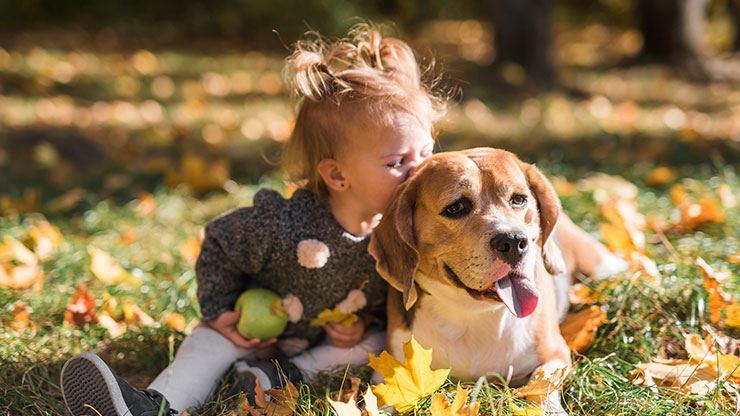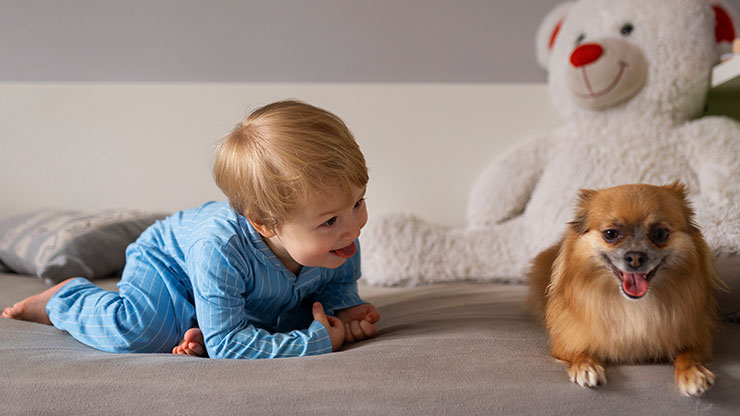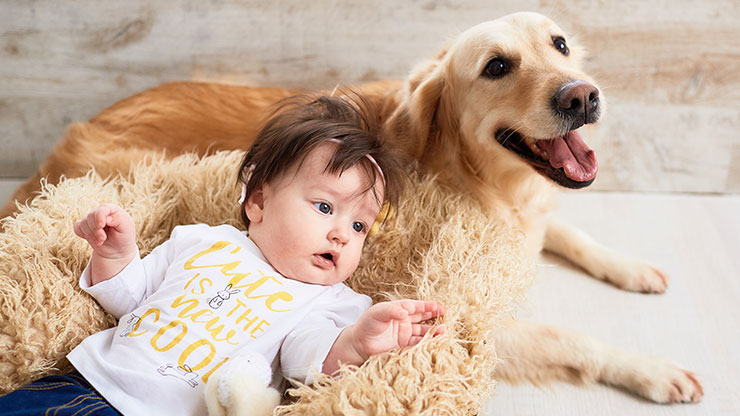
Introducing Your Dog to a New Baby: Tips for a Smooth Transition
Bringing a new baby into the family is an exciting and joyous time, but it can also present challenges, especially when you already have a beloved furry friend at home. Preparing your dog for the arrival of a new baby is crucial to ensure a smooth transition and maintain a harmonious household. In this article, we will provide you with valuable tips and insights on introducing your dog to a new baby, fostering a positive relationship between them, and ensuring the safety and well-being of both your four-legged and two-legged family members.
Begin Preparations Early
Preparing your dog for the arrival of a new baby should ideally start well in advance. Dogs thrive on routine, so gradually introduce changes to their daily schedule, including mealtimes, walks, and playtime. Familiarize them with baby sounds by playing recordings of baby cries or other noises. Additionally, if your dog has not been exposed to children before, arrange supervised interactions with well-behaved children to help them become comfortable around kids.
Obedience Training
Ensure your dog has a solid foundation of obedience training before the baby's arrival. Commands such as "sit," "stay," "leave it," and "down" will be essential for managing their behavior around the baby. Consider enrolling your dog in a refresher obedience course or working with a professional dog trainer to address any specific concerns or behavioral issues.

Scent Introductions
Scent is a powerful sense for dogs, so gradually introduce your dog to the scent of the baby before they come home. Bring home blankets or clothing that carry the baby's scent and allow your dog to sniff and investigate them. This helps familiarize them with the new smell and reduces any potential anxiety or curiosity when the baby arrives.
Establish Boundaries
Set clear boundaries for your dog before the baby's arrival. Decide which areas of the house will be off-limits to the dog and prepare a safe space or crate where they can retreat to when they need some quiet time. Baby gates can be used to restrict your dog's access to certain rooms. These boundaries will help create a sense of structure and ensure your baby's safety.
Gradual Introduction
When it's time for the initial meeting between your dog and the baby, ensure a calm and controlled environment. It's best to have another adult present to help manage the situation. Allow your dog to approach the baby at their own pace, always under close supervision. Offer positive reinforcement, such as treats or praise, to reward your dog for calm and gentle behavior around the baby. Remember never to force interactions and prioritize the safety and comfort of your dog and baby.
Positive Associations
Create positive associations between your dog and the baby by rewarding them for calm behavior around the baby. Encourage your dog to be near the baby by providing treats, praise, and attention when they exhibit gentle and relaxed behavior. This helps your dog associate the baby with positive experiences and builds a foundation for a healthy relationship.
Maintain Routine and Exercise
Even with a new baby in the house, it's crucial to maintain your dog's routine and ensure they receive adequate exercise. Daily walks, playtime, and mental stimulation are essential to prevent your dog from becoming anxious or frustrated. Consider involving your dog in baby-related activities, such as supervised walks with the stroller or allowing them to be present during feeding times, to reinforce positive associations.
Supervision and Safety
Never leave your dog and baby unsupervised, especially during the early stages of their interaction. Accidents can happen even if your dog has shown no signs of aggression or discomfort. Always maintain a physical barrier or use a leash to maintain control over your dog's movements when they are near the baby. Never allow your dog to lick or jump on the baby, as this can pose a risk of injury or transmission of germs. Always prioritize the safety and well-being of your baby by closely monitoring their interactions with the dog.

Monitor Body Language
Learn to read your dog's body language to understand their comfort level and reactions to the baby. Signs of stress or discomfort may include panting, pacing, yawning, lip licking, or avoidance behaviors. If you notice any of these signs, give your dog space and provide them with positive reinforcement for calm behavior. Consult a professional dog behaviorist if you have concerns or if your dog displays any aggressive or fearful behaviors.
Maintain Individual Attention
It's important to continue giving your dog individual attention and maintaining their bond with you. With the demands of a new baby, it's easy to neglect your dog unintentionally. Set aside dedicated time each day for one-on-one interactions, such as grooming sessions, training exercises, or simply cuddling. This helps prevent your dog from feeling excluded or neglected, promoting a sense of security and happiness.
Introducing your dog to a new baby requires careful planning, patience, and positive reinforcement. By taking proactive steps to prepare your dog, establish boundaries, and promote positive associations, you can create a harmonious environment for your four-legged and two-legged family members. Remember that every dog and baby interaction is unique, and it's essential to prioritize the safety and well-being of everyone involved. With proper preparation and guidance, you can ensure a smooth transition and foster a loving bond between your dog and your new baby.
-----
Author Bio
Chris Porter is a business strategist and writer at Informative Essay Outline and BeeStudent. He also shares his knowledge and insights by contributing articles to various online magazines and blogs, including Theory of Knowledge Essay. Chris finds pleasure in swimming, indulging in adventure novels, and cherishing the company of his two dogs.










